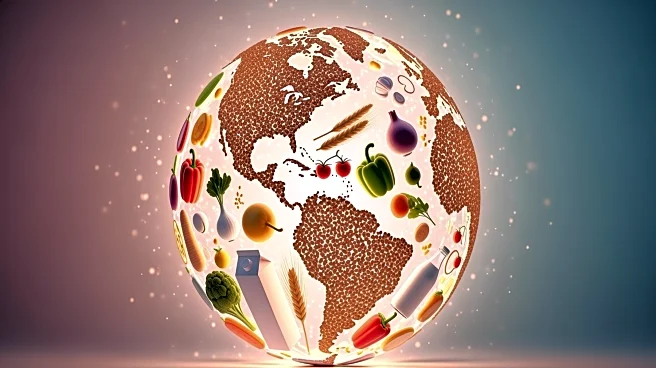What's Happening?
The food industry is increasingly incorporating protein into a wide range of products, including snacks, beverages, and candies. Companies like Starbucks, PepsiCo, and Kellanova North America are launching
protein-fortified versions of popular items such as cold foams, Doritos, and Pop-Tarts. This trend is driven by consumer demand for protein-rich foods, which are believed to increase fullness and build muscle. However, experts warn that many of these products are highly processed and contain added sugars and artificial ingredients, potentially undermining their health benefits.
Why It's Important?
The surge in protein-enhanced products reflects a growing consumer interest in health and nutrition, impacting the food industry significantly. While these products cater to the demand for convenient protein sources, they also raise concerns about the nutritional quality of processed foods. Consumers may be misled by 'protein-packed' labels, potentially leading to increased consumption of unhealthy additives. This trend could influence public health, dietary habits, and the marketing strategies of food companies, as they balance consumer preferences with health implications.
What's Next?
As the market for protein-enhanced foods expands, companies may continue to innovate and diversify their product offerings. Regulatory bodies might scrutinize labeling practices to ensure transparency and protect consumers from misleading health claims. Nutritionists and health advocates could push for clearer guidelines on protein consumption and the health impacts of processed foods. The industry may face pressure to develop cleaner, less processed options that align with health-conscious consumer demands.
Beyond the Headlines
The trend towards protein-enhanced foods highlights broader issues in the food industry, such as the ethical implications of marketing processed foods as healthy. It raises questions about consumer education and the responsibility of companies to provide genuinely nutritious options. Long-term, this could lead to shifts in consumer behavior, with increased demand for transparency and healthier alternatives, potentially driving innovation in food production and marketing.











